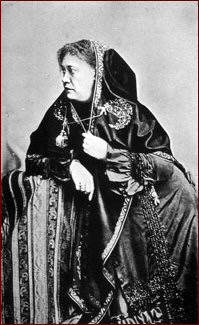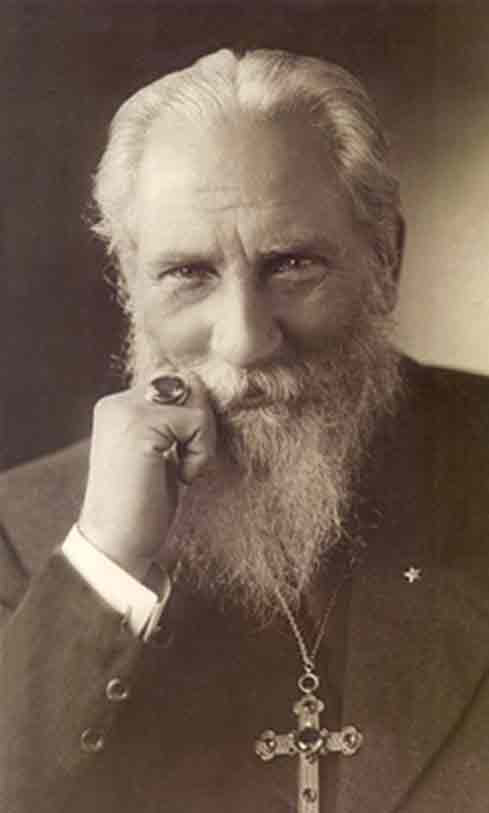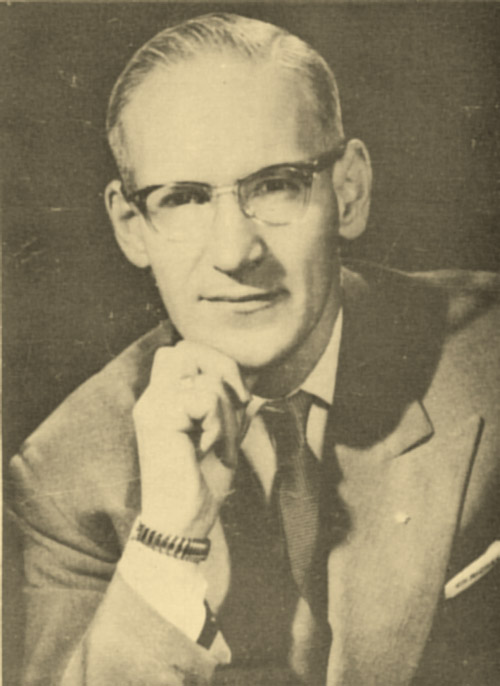A Gnostic study circle was established in Australia in 1886. Known as ‘The Melbourne Gnostic Society’, the group’s purpose was the study of “Theosophy and kindred matters.” Later becoming ‘The Gnostic Theosophical Society’, it was central to the foundation of the Theosophical Society in Australia.

Madame H.P. Blavatsky, the co-founder of the worldwide Theosophical Society and author of the society’s primary texts, had a profound interest in Gnosticism. Gnostic Bishop Stephan A. Hoeller says Madame Blavatsky “commented on the tradition voluminously (a compilation of her writing concerning runs to more than 270 pages). The contemporary student of Gnosticism, who has access to the Nag Hammadi Gnostic scriptures, would be greatly impressed if not outright awestruck by Blavatsky’s uncanny insight into Gnosticism.”1
Running through all Blavatsky’s writings is the idea there is an ‘ancient wisdom’ that has never ceased to exist: “The Gnosis lingers still on earth, and its votaries are many, albeit unknown.” While Blavatsky’s Theosophical Society was not concerned with resurrecting ancient Gnosticism, it did contribute immensely to the general awareness of the Gnostic Tradition. Through articles, books and public lectures, a positive interest in Gnosticism was encouraged. This was aided by the arrival in Australia in 1914 of the Theosophical Society leader, the Reverend Charles Webster Leadbeater.
A prolific writer on esotericism, Leadbeater has been described as “a remarkable character, hailed as the world’s greatest clairvoyant and occultist by his disciples, and denounced as a charlatan and an immoral corruptor of youth by his enemies.”2 Rev. Leadbeater established his home in Sydney where with James I. Wedgwood he helped found the Liberal Catholic Church. Soon churches were established in Australia’s major cities and Bishop Leadbeater presided over elaborate services at St Alban’s Cathedral, the Church’s impressive Sydney centre.

As co-founder of the Liberal Catholic Church, Bishop Leadbeater authored a number of articles and books outlining esoteric Christianity and giving the Church’s theological outlook, foremost among these Science of the Sacraments, The Hidden Side of Christian Festivals and The Christian Gnosis (published posthumously).
Richard, Duc de Palatine
With fascism and communism on the rise across Europe in the 1930s, in far away Australia a young spiritual seeker emerged who would later be known internationally as Richard, Duc de Palatine. From the age of 13 years, Ronald Powell (born in Melbourne in 1916) questioned the historical foundation of Christianity and was considered a heretic by the mainstream clergy. He writes of joining “the biggest occult library in the Southern Hemisphere at the Theosophical Lodge in Melbourne,” where he was mysteriously drawn to study “the extant writings concerning the Gnostics, Essenes and Secret Mysteries.” By 1944 he became convinced “that one day he would cause to be formed a Brotherhood which would partially restore the Sacred Lore and encourage people to prepare themselves for the Illumination and Interior Communion with the God within.”
In the early 1950s, like so many Australians of his generation, Powell journeyed to London where in 1953 he was consecrated as Bishop Richard John Chretien Duc de Palatine by the Patriarch Hugh George de Willmott Newman of the United Orthodox Catholic Rite. The name of Duc de Palatine is a personal and spiritual title.
On the 25th of October, 1953 the Most Rev. Richard, Duc de Palatine established in London the Pre-Nicene Gnosto-Catholic Church, with the stated object of “restoring the Gnosis – Divine Wisdom to the Christian Church, and to teach the Path of Holiness which leads to God and the Inner Illumination and Interior Communion with the Soul through the mortal body of man.” In 1958 the Most Rev. George William Boyer (1921-2008) was consecrated Auxiliary Bishop of the Pre-Nicene Gnostic Catholic Church and the designated successor to Bishop Duc de Palatine.

From his base in London’s Kensington, Richard, Duc de Palatine travelled on several occasions to France where he made contact with bishops of the French Gnostic Church. They encouraged him to fulfil his mission of transmitting the Gnostic tradition to the English-speaking world. He was also received by representatives of France’s leading mystical orders, including the surviving Grand Master of the Templar Order. In a profile of Richard, Duc de Palatine’s life we read that he held high office in many esoteric bodies: “Through these Orders and his many contacts, particularly in France which he frequently visited, Richard was able to bring forth in a semi-public forum the hidden teachings, the Gnosis of the Soul, which exposed the false vestiges of truth that had been foisted onto the people.”
Through his London based Pre-Nicene Publishing House, Richard, Duc de Palatine issued a series of booklets on Christian Gnosticism, with titles like “The Inner Meaning of the Mystery Schools,” “The Christian Mysteries,” and “Christ or Jesus?” He also published “The Lucis Magazine” as the official organ of ‘The Sovereign Imperium of the Mysteries.’ Reviewing Richard, Duc de Palatine’s early writings it is obvious how far-sighted and spiritually gifted he was. Articles in his magazine ranged from discussions of “The Fallen Angels” and the “Dead Sea Scrolls” to the “Christian Fathers on Reincarnation” and “Spiritual Illumination”.
Richard, Duc de Palatine’s magazines and booklets reached Australia through the Pre-Nicene Gnostic Catholic Church’s Australian secretary. He also formed several associated esoteric orders including the ‘The Brotherhood and Order of the Pleroma’ and the ‘Order of St Raphael’. As Lord Abbot, Richard, Duc de Palatine presented the visionary English poet Ralph Nicholas Chubb with an illuminated scroll from the Order of St Raphael in appreciation of his services to mankind.
The 1960s witnessed a growing interest in Gnosticism in the USA. Richard, Duc de Palatine travelled to the United States, eventually settling in California where he formed ‘The Sanctuary of The Gnosis’ in Hollywood, before his passing in the late 70s. On 7 April 1967 Bishop Duc de Palatine consecrated Stephan A. Hoeller (Tau Stephanus) and in 1974 he consecrated Michael Itkin 1936-1989 (Mar Mikhael). The Californian journalist Nat Freedland interviewed Richard, Duc de Palatine for the 1972 book The Occult Explosion. Freedland described him as an “Australian-born metaphysician” who is a “professional-looking divorced businessman who enjoys jokes, cigars, and brandy when he’s not on the speaker’s platform – he feels that he is in a state of inspiration when he lectures and always speaks ad lib without any notes.” In his 1971 book The Key to Cosmic Consciousness, Bishop Duc de Palatine is described as an “outstanding mystic and illumined teacher and writer” whose “knowledge and experience stems from his own illumination in 1956, after applying the teachings of the early Gnostic Fathers…”
Seekers of Truth
The early 1980s saw the mass publication of the Nag Hammadi Gnostic texts along with a number of highly-acclaimed academic studies of ancient Gnosticism, foremost among these The Gnostic Gospels by Elaine Pagels. In Australia, an informal network of Gnostic students came together – largely in private – seeking to synthesise the latest scholarly research on Gnosticism with the insights of Richard, Duc de Palatine and other gifted teachers of the Gnosis. Encouraged by a resurgence of interest in Gnosticism in the United States – confirmed by the launch in 1985 of the high-quality GNOSIS journal and by the tireless efforts of Bishop Stephan A. Hoeller in California – some Australian Gnostics began their own public activities. By the 1990s the Gnostic Apostolic Church, Institute of Gnostic Studies, New Gnosis, and the Life Science Fellowship were presenting Gnostic teachings throughout Australia.
Since Richard, Duc de Palatine’s passing, the work of the Gnosis, of necessity, has taken on many guises and has appeared in different forms. In the United States the Gnostic tradition restored by Richard, Duc de Palatine is carried on chiefly by Dr. Stephan A. Hoeller, Presiding Bishop of Ecclesia Gnostica. In Great Britain and Australia the Gnostic work has taken on a private approach in order to implement links with the more esoteric side of the Gnostic tradition. The Universal Gnostic Alliance, a consortium of Gnostic organisations in the Asia and Pacific region, was established in Australia at Easter, 2005. Formally chartered “to perpetuate the work of encouraging the study and propagation of the Ancient and True Universal Philosophy of the Inner Gnosis,” the Universal Gnostic Alliance honours the vision of the late Bishop Richard, Duc de Palatine and continues the pioneering work of the Noble Travellers and Gnostic Adepts who went before.
Readers interested in learning more about the Gnostic tradition in Australia can fill out the Contact Form on this website.

